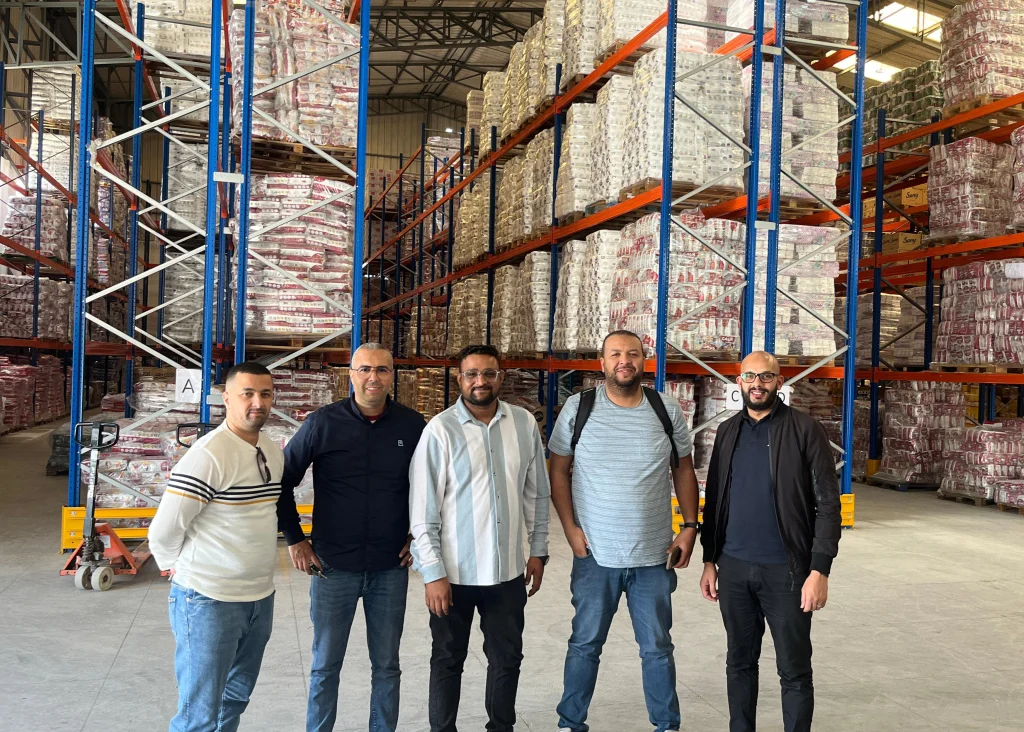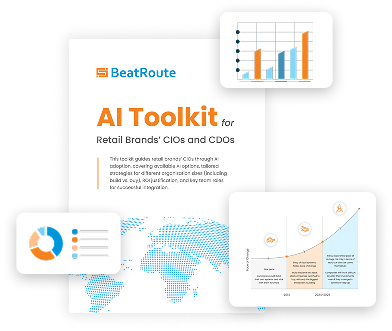The Complete Guide to Intensive Distribution Strategy

Sales is the sole purpose of a business enterprise because as a seller or manufacturer, you have products that you need to give away for money. This money is your revenue, proof that your enterprise is working. But how do you get the word out that you have the world’s best ready-to-eat food or the most efficient washing machine? Advertising is one way to go about it but there’s another – the intensive distribution strategy.
You grab all the eyeballs you possibly can by getting your products into every channel out there, from online to offline to big supermarket chains to small local shops. Once your distribution happens on that scale, you have a far better scope of identifying areas of improvement, what works, and which products are bringing in the most revenue.
In this article, we focus on all things intensive distribution so that readers can understand why such a strategy could be beneficial to their businesses.
What is an Intensive Distribution Strategy?
The main purpose behind an intensive distribution strategy is to place products in as many outlets and channels as possible, resulting in maximum reach. When consumers are able to see or buy your products from virtually any store, especially when yours are FMCG products that benefit from fast offtake, your sales experience an impressive uptick.
Examples
An example of maximum product availability can be seen in the case of beverage giant Coca-Cola that employs an intensive distribution strategy, ensuring their beverages are available in supermarkets, convenience stores, vending machines, restaurants, and now even via online quick commerce. This leads to convenience for their consumers, immense brand visibility, and from there, record sales volumes.
Additionally, products like detergents, shaving razors, and toothpaste are distributed through a vast network of retailers, such as supermarkets, drugstores, and online platforms. By making their products available everywhere, brands like P&G increase the likelihood of impulse purchases and develop brand loyalty.
Considering appliance brands, Philips distributes its products such as electric toothbrushes, coffee makers, and handheld mixers through retail channels like electronics stores, department stores, and online marketplaces. Smaller appliances benefit from an intensive distribution strategy as wide market coverage also exposes their products to consumers shopping for other household goods.
Benefits of an Intensive Distribution Strategy
A well-executed intensive distribution strategy takes your products to every corner of a region or country that you are targeting. More shelf space in more stores means more eyes on your product, leading to desirable outcomes like recognition and impulse purchases. We discuss these below.
- Increased Market Coverage: By placing products in as many channels and stores as possible, a brand can ensure that its products are available to a huge range of consumers, enhancing market penetration and presence.
- More Convenient for Consumers: Consumers feel more at ease with your products available at numerous outlets because they don’t have to travel far or look everywhere for them.
- Higher Sales Volume: The more stores, online and offline, that have your product, the more customers who have access to them. Widespread availability ensures that your offerings have a far greater chance of being sold than otherwise, improving sales volume.
- Competitive Advantage: Being available in numerous outlets can provide a competitive edge over brands that are not as widely distributed, making it more likely for consumers to choose the intensively distributed brand.
- Greater Brand Awareness: Frequent exposure to the product across various locations enhances brand visibility, which can boost brand awareness and recognition over time.
- Impulse Purchases: Products that are widely available can capitalise on impulse buying behaviour, as consumers are more likely to make spontaneous purchases when they frequently encounter the product.
- Better Retailer Relationships: Intensive distribution can foster strong relationships with a wide range of retailers, as they benefit from a product that has high consumer demand and availability.
Channels of an Intensive Distribution Strategy
As already discussed, there are numerous ways to ensure your products are available far and wide in maximum channels. This ability enhances your sales performance and potentially sets you up to become a household name.
Let’s look at some of the most obvious channels below:
1. Retail stores
Strategically located in areas with high foot traffic, such as neighbourhoods or shopping malls, retail stores are typically accessible to a large customer base. Their stocks are diverse and attract a wide demographic looking for both convenience and variety. This not only encourages planned shopping but also impulse purchases that can significantly impact sales volumes, especially with an intensive distribution strategy. Products like snacks, beverages, and household items are commonly distributed through retail stores.
Types of retail stores could be:
Kirana stores in India or equivalent – Small kirana stores, or neighbourhood convenience stores, are integral to an intensive distribution strategy, because of their general placement in densely populated regions. Kirana stores are a part of local communities in that they also form interpersonal relationships with their consumers. Offering unparalleled convenience and reliability, these stores are a preferred choice for many consumers, fostering strong customer loyalty. Their typical stock includes essentials such as consumer packaged foods, personal care products, and cleaning supplies such as floor cleaners and detergents, which have high offtake rates. More offtake means more replenishment from brands leading to more sales and exposure for your products.
Supermarkets and hypermarkets – Supermarkets and hypermarkets are pivotal in an intensive distribution strategy not only because they can reach a wide audience but also for their ability to stock more. These typically have a bigger in-store area that allows them to offer a comprehensive range of goods, from groceries and electronics to packaged goods and household items. They also capitalise on bulk purchases and encourage customers to buy more every time they come shopping. Additionally, they also have the space and infrastructure to allow for flashy displays and product promoters.
Pop-up retail – These are stores that temporarily occupy a space in high traffic zones like malls to promote and/or sell products. The benefit of opening a pop-up store is that it allows brands to generate buzz and engage consumers directly and in-person, leading to heightened brand awareness. Pop-up stores are particularly effective for seasonal products, product launches, and market testing. By strategically positioning pop-up shops during events and festivals, brands can grab the attention of a large consumer base, making them highly valuable for an intensive distribution strategy.
2. Quick commerce
Quick commerce is an emerging and highly effective channel within an intensive distribution strategy that is focused on ultra fast delivery of goods. Strongly catering to consumer demand for speedy delivery and convenience, quick commerce leverages small fulfilment centres or stores located close to high-density areas. Products distributed through quick commerce may include groceries, FMCG products, and daily essentials, although the range is increasing every day. Rapid delivery allows quick commerce to enhance customer satisfaction and loyalty, making it an important part of an intensive distribution strategy.
3. Vending machines
Vending machines offer 24×7 access to products in convenient locations such as airports and shopping centres. They are specifically suitable for small, high-demand items like snacks and beverages while their placement in high-traffic areas generates maximum visibility and accessibility, allowing for impulse purchases. Vending machines can significantly enhance distribution coverage and contribute to overall sales growth, especially in areas a retail store cannot penetrate.
4. Wholesalers
Wholesalers serve as intermediaries between brands and retail outlets as they purchase products in bulk from manufacturers and then distribute them to retail stores, kirana shops, supermarkets, etc. This allows manufacturers to achieve extensive market coverage. Some wholesalers may also provide storage and transportation, ensuring that products are readily available to satisfy consumer demand. Their vast distribution capabilities make them essential for ensuring the widespread availability of products in an intensive distribution strategy.
Challenges of an Intensive Distribution Strategy
Any strategy on a large scale involves a lot of components, which means a lot can go wrong at any point in time. In case of an intensive distribution strategy, keeping track of large inventories can get overwhelming, especially in the absence of an enterprise inventory management system.
What this can do is lead to stockouts, where demand outruns supply, or overstocking, which is keeping too much stock to sell on time. Implementing a retail execution platform like BeatRoute can help you avoid stock outages through stock norms functionality, i.e. a precise threshold below which immediate restocking alert is generated. It’s never smart to wait for your stock to hit zero or get close to zero. Keeping the supply chain unburdened while ensuring adequate stock necessitates precise forecasting and coordination via sophisticated inventory management systems.
Keeping a DMS integrated into your retailer app so that any order placed by retailers can be quickly communicated to distributors for fast fulfilment is another big step in this direction. Also, keeping an eye on stock out patterns via reliable analytics can also help you predict and avoid the same.
Product quality is another aspect of an intensive distribution strategy that offers challenges. In cases where returns are necessary, sales reps can mark items for return or you can enable your retailers to request for returns on a reliable retailer app. You can provide credit notes to retailers for this. Additionally, with so many outlets, regular evaluation and constant monitoring is necessary to ensure quality adherence. Any lapse here could harm your reputation, making robust quality control measures an absolute key to sustaining your business in the long run.
Managing the costs associated with an intensive distribution strategy is challenging yet crucial. Multiple distribution channels can lead to high expenses stemming from logistics, staffing, and even infrastructure. Also, you need to make significantly more marketing investments than before to support sales across all outlets. There is also the question of overstretching your resources in the pursuit of revenue; be wary of blind onboarding and ensure appropriate KPIs are in place to avoid that.
For example if you hire too many sales reps to cover the greater number of outlets and it turns out that some of these outlets were unsuitable, you will end up not only with unnecessary resources but also inventory wastage. The same goes for visual merchandising at such stores. The financial strain from such decisions can severely hurt your operational capability. Use data-driven retailer profiling to identify the best outlets for your product placement.
With BeatRoute, B2B customer onboarding is made accurate by using a wide range of attributes, including custom fields that you can modify to meet your brand goals. Social profiles and credit scores allow brands to gain deeper insights into customers. The onboarding process involves taking pictures and custom KPIs along with smart GPS location capturing.
Our proprietary de-duplication algorithm and real-time checks prevent duplicate records and invalid inputs, ensuring data integrity. Approval workflows maintain data sanctity on multiple levels, while AI-backed auto-locking preserves the geocode accuracy. An effective approval workflow captures all predetermined data points and submits them for approval. This can help you to not only accept or reject the outlet but also classify it into an appropriate class (such as A, B, C, etc.) for targeted engagement post-onboarding.
You can also incentivise sales reps with practical KPIs such as repeat business from new outlets and the number of outlets placing consecutive (2nd and 3rd) orders, rather than just onboarding new outlets, to ensure your product is placed in viable locations. All of these add to an efficient system, preventing unnecessary hiring and blind onboardings that ultimately lead to financial loss.
Customer service is the other critical element of an intensive distribution strategy as the sheer scale of the distribution makes it even more important to address customer concerns across multiple outlets. Personalised service and broad distribution may be hard to balance as different distribution channels offer different levels of service. But it still goes without saying that keeping your consumers or end customers satisfied ensures their loyalty and repeat business.
Finally, good technology precedes a successful intensive distribution strategy. Managing large volumes of data from numerous stores across multiple channels over different regions requires robust software systems like BeatRoute. Compatibility and integration between various distribution and inventory systems can be complex but highly crucial to getting accurate data for further strategising. Inventory updates and sales data are critical for maintaining efficiency, and therefore, investing in reliable technology is indispensable to intensive distribution.
How to Create an Intensive Distribution Strategy
- Understand the extent of distribution you aim to achieve. Understanding your product is an important aspect of this like if yours is a frequently purchased product or not.
- Identify retail outlets that make the most sense for your product. For example, it makes sense for biscuits to be in a vending machine for quick access to snacking but not so much for instant noodles that are better suited to a store. It’s necessary to tap into appropriate channels for your distribution, not in every channel out there.
- Data profiling is a crucial step to go about your intensive distribution strategy and involves collecting and analysing detailed information about your products, the market, and customers. By determining demographics, purchasing behaviours, and consumer preferences, your distribution efforts can be customised to meet consumer needs more precisely. This ensures that the right products are available at the right places, maximising reach and sales.
- Once you have identified retailers and outlets that are perfect for what you are offering, devote time in building rapport via sales reps and quick issue resolutions. This will ensure that repeat business keeps coming and you can go ahead and negotiate things like extra space or shelf space, etc. Gaining trust and building a strong relationship with your B2B customers can be greatly bolstered with a robust sales enablement platform like BeatRoute with customer and sales app iterations.
- Your supply chain must be streamlined so that your supply can always meet the demand for your products. There is nothing worse than when offtake is extremely high and retailers ask you for a restock only to be delayed. Although such a crisis can occur at any point in your supply chain including your distributors, the responsibility is yours because your brand image is on the line.
- Always keep an eye on your operations and prioritise supply chain problems to avoid losing your channel partners, the building blocks of any intensive distribution strategy. Collaborative automation with BeatRoute is an excellent way to go about this as all parties involved are aware of the situation and thereby, able to adapt or assist as possible.
- Implementing advanced distribution management software, inventory management systems, etc. help streamline operations. These facilitate the efficient management of large volumes of your offerings, tracking of inventory in real time, and optimisation of supply chain. Functional scalability ensures that your distribution strategy can develop and adapt unhindered without compromising efficiency.
- Keep in mind that the performance of your intensive distribution strategy is crucial to it being a long-term success. Additionally, ensure to document and consider what your channel partners everywhere are saying about your products. If something doesn’t turn out to be as lucrative as you thought it would, it’s best to rethink your strategy. After all, any business strategy, including intensive distribution, is always in flux and the brand needs to be able to change it as and when needed.
- A unified platform typically enables all teams and channel partners to work together and contribute towards brand goals. Providing a seamless experience for all parties, it offers real-time data access and communication tools, ensuring that brands, distributors, and retailers are all aligned and informed. By encouraging strong relationships between brand and retailer or distributor, a unified platform leads to an uptick in efficiency while greatly reducing chances of grave errors.
Our Conclusion
When you place your products in the maximum number of outlets relevant to your category or offerings, you end up maximising visibility and accessibility. Apart from brand recognition, your sales volume could potentially go through the roof because you were able to reach a vast consumer base. From managing inventories to having strict quality standards in place, there is a lot to cover for your intensive distribution strategy to be a howling success but in spite of this, the pros outweigh the cons. By knowing exactly what you are offering, your USP, and your consumers, fostering powerful brand-retailer relationships, and constantly monitoring the performance of your strategy, you can bring about business transformation headed towards impressive growth.
Try our free demo today!
About the Author
-
Apart from being a Senior Content Writer at BeatRoute, Soham is an avid reader of science fiction and suspense novels (Doyle, Christie, Brown or anybody great!) He also dabbles in historical narratives and wonders about our place in the universe. Cosmic viewpoints, Carl Sagan, and Neil deGrasse Tyson intrigues him. When not reading, you may find him spending his weekends or after-work hours watching a fulfilling movie with his family.
Use Goal-Driven AI to Achieve Retail Sales Uplift, Today!
Join enterprises in 20+ countries that trust BeatRoute, the globally dominant AI platform for sales force automation, field sales, DMS, and eB2B
Latest Insights & Articles
Here are the most impactful articles, platform updates, ebooks and reports for you.



